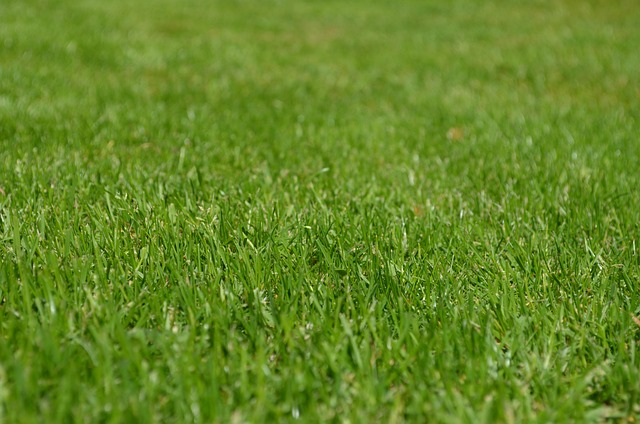Lawn fertilization and weed control are crucial components of Lawn Care and Landscaping. Fertilization with macronutrients like nitrogen, phosphorus, and potassium promotes grass health and root systems. Timing is vital, with spring and fall offering optimal conditions. Slow-release fertilizers minimize nitrogen leaching and ensure gradual nutrient absorption. Effective weed management involves watering techniques, mowing heights, manual removal, pre-emergent/post-emergent herbicides, and tailored fertilization based on grass species and soil type. This holistic approach leads to a vibrant, healthy lawn, enhancing outdoor spaces and supporting long-term Lawn Care and Landscaping success.
Lawn fertilization and weed control are essential components of any comprehensive lawn care and landscaping strategy. A healthy, vibrant lawn starts with understanding the critical role nutrients play in its growth and development. This article guides you through the process, from identifying essential nutrients to mastering the art of timing for optimal fertilization. Additionally, we explore effective weed control strategies that complement fertilization efforts, ensuring a lush, weed-free yard. Discover best practices to integrate these techniques seamlessly into your lawn care routine.
- Understanding Lawn Fertilization: Essential Nutrients and Timing
- Effective Weed Control Strategies for a Healthy Lawn
- Integrating Fertilization and Weed Control: Best Practices for Lawn Care and Landscaping
Understanding Lawn Fertilization: Essential Nutrients and Timing

Lawn fertilization is a crucial aspect of lawn care and landscaping, ensuring your grass remains healthy, vibrant, and lush. Understanding the essential nutrients required by your lawn and the optimal timing for application is key to achieving this. Nitrogen, phosphorus, and potassium are the primary macronutrients that grass roots need for growth. These nutrients promote robust leaf development, deep root systems, and overall turf health.
Timing plays a vital role in effective fertilization. Spring and fall are generally considered the best seasons for lawn care as the temperatures are moderate, and the grass is actively growing. During these periods, fertilizing helps prepare your lawn for the upcoming warmer or colder months. It’s important to choose a slow-release fertilizer to avoid nitrogen leaching into local water sources and to ensure nutrients are gradually absorbed by the roots over time, leading to healthier, more resilient grass.
Effective Weed Control Strategies for a Healthy Lawn

Maintaining a lush, green lawn free from weeds is an essential part of lawn care and landscaping. There are several effective strategies to achieve this goal. Firstly, proper watering techniques play a crucial role in weed control. Weeds often thrive in dry conditions, so ensuring your lawn receives adequate but controlled moisture can suppress their growth. Secondly, regular mowing is vital. Keep grass at the recommended height, as shorter cuts encourage weed seeds to germinate. Removing weeds by hand is also effective, especially for smaller areas, allowing you to target specific unwanted plants.
Additionally, incorporating pre-emergent and post-emergent herbicides into your lawn care routine can be highly beneficial. Pre-emergent chemicals prevent weed seeds from sprouting, while post-emergents target existing weeds. When used correctly, these treatments can provide long-lasting results. Combining these methods with proper fertilisation ensures a healthy lawn that can outcompete weeds naturally, leading to a vibrant and well-maintained outdoor space in your landscaping efforts.
Integrating Fertilization and Weed Control: Best Practices for Lawn Care and Landscaping

In the realm of lawn care and landscaping, a harmonious blend of fertilization and weed control is paramount to achieving a lush, vibrant green space. Integrating these practices effectively ensures your lawn thrives while minimizing unwanted weeds. Best practices involve understanding your grass species and soil type, as different fertilizers cater to specific needs. A balanced approach, where nutrients are delivered according to seasonal requirements, promotes robust growth without fostering excessive weed development.
Regularly assessing your lawn’s health and adjusting fertilization schedules accordingly is key. Pre-emergent herbicides can be applied before weeds sprout to prevent their growth, while post-emergent treatments target existing weeds. Combining these methods allows for a well-maintained lawn that’s free from unsightly invaders. This holistic approach not only enhances the aesthetic appeal of your outdoor space but also contributes to long-term lawn care and landscaping success.
Incorporating effective lawn fertilization and weed control practices is key to achieving and maintaining a lush, vibrant lawn. By understanding the essential nutrients required and optimal timing for fertilization, as well as implementing robust weed control strategies, you can ensure your lawn stands out as the envy of the neighborhood. Integrating these best practices seamlessly into your lawn care and landscaping routine will result in a healthy, thriving lawn that adds beauty to any outdoor space.






